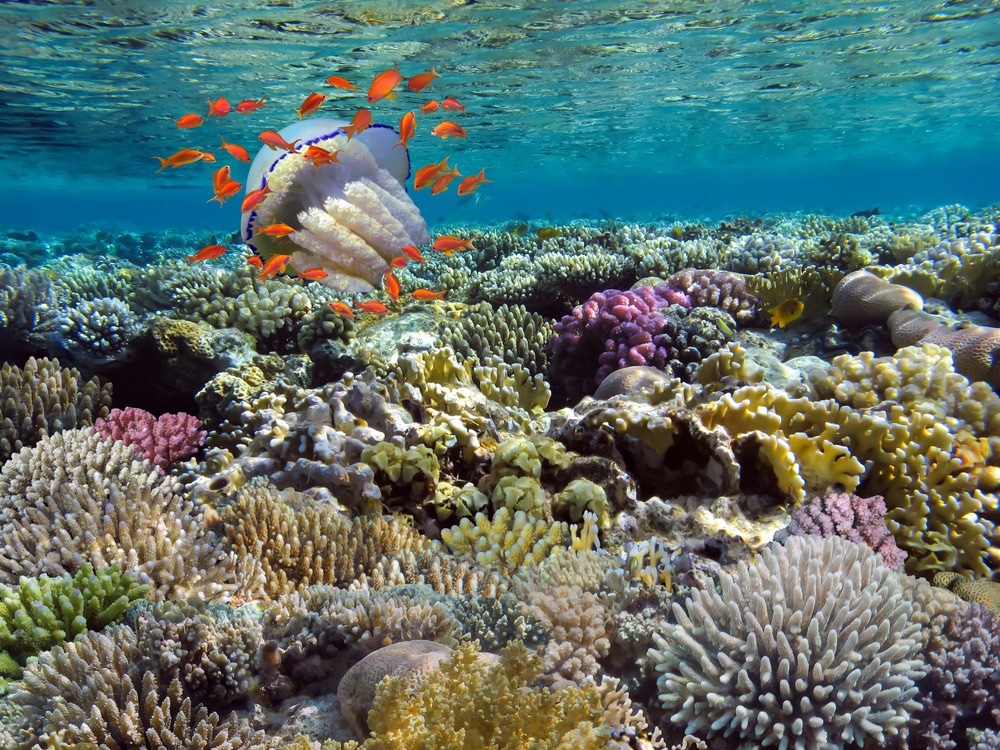According to recent data on population increase in coastal areas, millions more people than 20 years ago depend on severely threatened coral reefs.

Image Credit: Vlad61/Shutterstock.com
According to research from the University of Essex, there are now about one billion people living in coastal regions near coral reefs, an increase of 250 million since 2000, and these populations are growing faster than the global average.
Concerningly, the human density has increased to a level that is now four times the global average in places closest to the coral reefs, where people’s direct livelihoods depend on these important ecosystems.
This new study, which was published in the journal Global Change Biology, offers the most comprehensive and recent data on disparities in coastal population trends between 5–100 km from coral reefs on a global, regional, and national level.
The presence of human populations close to ecosystems is used to highlight both the threat to and dependence on those ecosystems.
The greatest threat to coral reefs is climate change, and in these coral-adjacent coastal areas, a balance needs to be struck between the valuable services coral reefs offer to people, such as storm protection, food supply, and livelihoods, and the potentially harmful human activities that take place there, such as overfishing, pollution, and the destruction of corals for construction.

Image Credit: University of Essex
The health and survival of coral reefs are significantly influenced by human activity.
The number of people living close to coral reefs is frequently utilized in regional coral reef management and the assessment of risk at regional and global scales. Coastal populations are assessed as 100 km (60 miles) from coasts.
Coral reefs are at the forefront of our climate catastrophe. They are also subject to many human-made impacts—from pollution and overfishing to tourism and extraction of raw materials.
Dr Amy Sing Wong, Graduate Laboratory Assistant and Postgraduate Research Student, School of Life Sciences, University of Sussex
Dr. Wong added, “Yet, coral reefs are also a lifeline to millions, acting as a primary source of protein to some of the poorest people on Earth. Broadly, more people by coral reefs translates to more impacted coral reefs.”
“Our research into understanding changes in human populations close to coral reefs is therefore crucial. We knew that global populations near coral reefs were high, but we did not expect nearly one billion people within 100km of coral reefs in 2020,” Dr Wong further stated.
Less than 1% of the world’s oceans are covered by coral reefs, which are also some of the most complex and productive ecosystems on the planet. Coral reefs also support up to 25% of all marine fish species.
It is expected that the number of coral reefs will fall by 70–90% over the next ten years, and by up to 99% if global warming exceeds 2 °C above pre-industrial levels.
The scientists are now hoping that their findings will help identify areas at higher risk, which will prove to be a powerful management tool to guide policies around coastal protection—something that is essential for safeguarding the future of the vulnerable coral reef ecosystems and the people who depend on them.
There is a concern regarding high coastal zone human population growth as it has been associated with the degradation of coastal and marine ecosystems.
Dr Michelle Taylor, Senior Lecturer, Marine Biology, University of Essex
“By providing country-level coastal population data we hope it can be used in global policy goals such as the Sustainability Development Goals (SDGs). Our study highlights the millions of people that have a potential dependency on coral reefs and are therefore vulnerable to climate-change impacts on these sensitive ecosystems,” Dr Taylor stated.
The Indian Ocean recorded a 33% rise in population within 100 km of a coral reef and a 71% increase at 5 km, according to data from 117 coral reef countries. There are 60 countries where all people live within 100 km of coral reefs.
Small Island Developing States (SIDS), which depend heavily on marine ecosystems and are recognized as a unique set of nations that are disproportionately vulnerable to climate change, are of particular concern. According to the report, 94% of people in SIDS reside within 100 km of a coral reef.
Journal Reference
Wong, A. S., et al. (2022) An assessment of people living by coral reefs over space and time. Global Change Biology.doi:10.1111/gcb.16391.